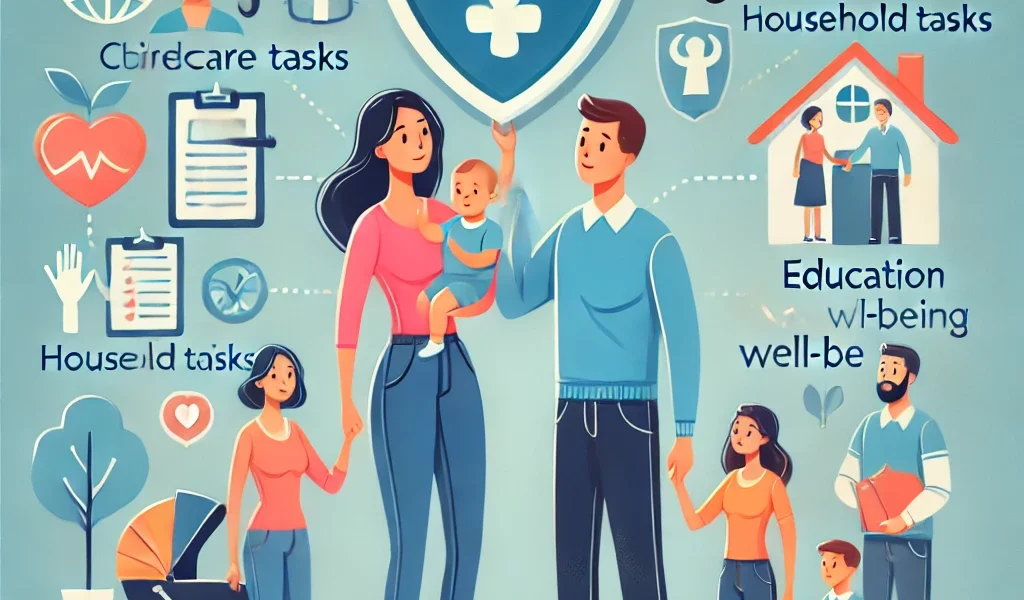Introduction
Stay-at-home parents play a crucial role in maintaining a household, raising children, and ensuring family well-being. Despite not earning a traditional paycheck, their contributions have significant financial value. However, many families overlook the importance of life insurance for stay-at-home parents, assuming that coverage is only necessary for primary earners.
This guide will explain why life insurance for stay-at-home parents is essential, how to determine the right coverage, and how to choose the best policy to secure your family’s future.
1. The Financial Value of Stay-at-Home Parents
A stay-at-home parent provides services that would be expensive to replace, including:
- Childcare
- Household Management
- Cooking & Meal Planning
- Tutoring & Educational Support
- Transportation (school drop-offs, medical appointments, etc.)
- Emotional & Psychological Support for the Family
If a stay-at-home parent were to pass away, the surviving spouse or family members would need to hire professionals to handle these tasks, which could create a significant financial burden.
2. Why Stay-at-Home Parents Need Life Insurance
2.1. Covers the Cost of Childcare and Household Services
Without a stay-at-home parent, childcare costs alone can amount to thousands of dollars annually. Life insurance provides a payout that can cover:
- Daycare or nanny services
- Housekeeping and meal preparation
- Educational expenses and tutoring
2.2. Replaces Non-Monetary Contributions
While stay-at-home parents may not bring in direct income, their efforts contribute to the overall financial stability of a family. A life insurance payout ensures that their absence does not lead to financial hardship.
2.3. Helps Surviving Spouse Maintain Work-Life Balance
The surviving spouse may need to take time off work to grieve, adjust, and manage household changes. A life insurance policy provides financial security during this transition.
2.4. Covers Funeral and End-of-Life Expenses
Funeral expenses can be costly. A life insurance policy ensures that these costs do not burden the family during an already difficult time.
2.5. Ensures Children’s Future Education
A life insurance payout can be set aside for college tuition, extracurricular activities, and educational support, ensuring that the children’s future remains secure.
3. Choosing the Right Life Insurance for Stay-at-Home Parents
There are different types of life insurance policies to consider:
3.1. Term Life Insurance
Best for: Families looking for affordable protection for a specific period.
- Covers 10, 20, or 30 years
- Lower premiums than permanent life insurance
- Provides a lump sum payout if the insured passes away during the policy term
3.2. Whole Life Insurance
Best for: Families looking for long-term coverage with a savings component.
- Provides lifetime coverage
- Builds cash value that can be accessed during the insured’s lifetime
- Higher premiums but offers additional financial benefits
3.3. Joint Life Insurance
Best for: Couples who want shared coverage.
- Covers both parents under one policy
- Payout is provided upon the passing of one parent
- May offer a lower cost than two separate policies
3.4. Riders to Consider
- Childcare Rider: Provides additional funds specifically for childcare expenses.
- Waiver of Premium Rider: Ensures coverage remains active if the policyholder becomes disabled.
- Education Fund Rider: Allocates a portion of the payout for children’s education.
4. How to Determine the Right Coverage Amount
Step 1: Calculate the Financial Contributions
Estimate the annual cost of replacing the services provided by the stay-at-home parent. Consider:
- Childcare: $10,000–$25,000 per year
- Housekeeping: $5,000–$10,000 per year
- Transportation: $3,000–$6,000 per year
- Meal Preparation: $3,000–$7,000 per year
Multiply these expenses by the number of years the family will require these services.
Step 2: Consider Future Expenses
Factor in future financial needs such as:
- Education and college tuition
- Healthcare costs
- Inflation-adjusted costs of living
Step 3: Choose a Coverage Amount
A general rule is to have life insurance coverage worth 5 to 10 times the annual estimated expenses. This ensures that the family can sustain their current lifestyle without financial hardship.
5. DIY Steps to Secure the Right Life Insurance
Step 1: Assess Your Family’s Financial Needs
Determine how much coverage is needed based on current and future expenses.
Step 2: Compare Insurance Providers
Look for policies with high claim settlement ratios, competitive premiums, and reliable customer service.
Step 3: Select the Best Policy Type
Decide between term, whole, or joint life insurance based on affordability and long-term goals.
Step 4: Work with a Licensed Insurance Agent
A professional can help tailor a policy to fit your specific financial situation.
Step 5: Regularly Review and Update Your Policy
As financial circumstances change (new children, mortgage paid off, etc.), update your coverage to align with your family’s needs.
6. Common Myths About Life Insurance for Stay-at-Home Parents
Myth #1: Stay-at-Home Parents Don’t Need Life Insurance
Reality: Their contributions have significant financial value, and their absence could create unexpected financial burdens.
Myth #2: Only the Primary Earner Needs Coverage
Reality: Losing a stay-at-home parent impacts the entire family’s stability.
Myth #3: Life Insurance Is Too Expensive
Reality: Term life insurance is highly affordable, especially when purchased early.
Myth #4: Employer Coverage Is Enough
Reality: Employer-provided insurance only covers working parents and often has limited coverage amounts.
Conclusion
Stay-at-home parents are the backbone of a household, and their contributions have immense financial value. Life insurance ensures that their absence does not lead to financial hardship, helping families cover childcare, household costs, education, and future financial security.
By choosing the right policy, determining the appropriate coverage amount, and planning wisely, families can protect their future and ensure stability for their loved ones.
Secure your family’s future today – because every parent’s role is invaluable!
Call to Action
✅ Evaluate your family’s financial needs
✅ Compare life insurance options
✅ Protect your loved ones with the right coverage




